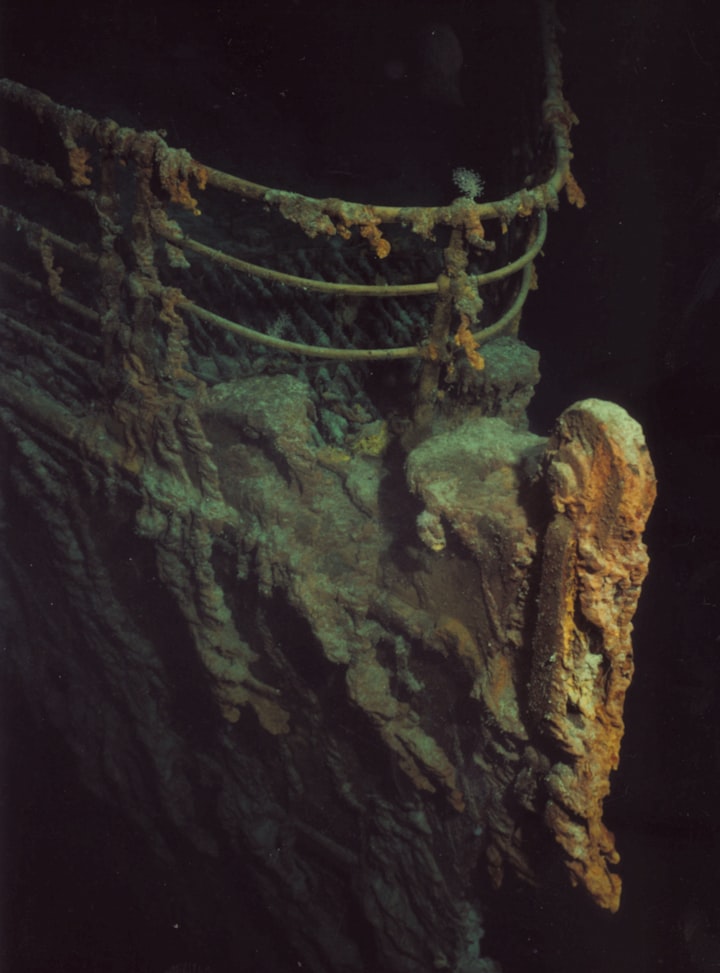TITANIC FIRE THEORY
What really happened in the sinking of the Titanic?
Recent research has cast doubt on the long-held belief that the Titanic's collision with an iceberg was the sole cause of its tragic sinking on April 15, 1912. Journalist Synonym Maloney has conducted extensive research on the subject, revealing a new theory that suggests a fire played a significant role in the disaster.
During his investigation, Maloney discovered a massive black spot on the Titanic's hull, measuring an impressive 30 feet in length. This finding was made possible by an unpublished album of photographs showcasing the construction and preparation of the ill-fated ship. It is believed that the fire had been burning at extreme temperatures for three weeks before anyone noticed it, weakening the metal structure by 75 percent. Consequently, when the iceberg struck the weakened hull, it was able to create a fatal rupture.
However, the existence of the fire is just one link in a chain of unfortunate events that contributed to the Titanic's demise. It is alleged that those in charge of the ship were aware of the fire but chose to proceed with the voyage to avoid financial losses and a potential bankruptcy. In addition, due to a coal shortage caused by a miners' strike, the ship's management acquired coal from various sources, including other ships, to ensure the trip could proceed as planned. To hide the evidence of the fire, the ship's hull was deliberately positioned to face the sea, concealing the marks from the dock.
Another factor that contributed to the disaster was the absence of binoculars for the lookout crew. The binoculars were locked away, and the key was forgotten by Second Officer David Blair, who was replaced shortly before the ship set sail. This oversight, combined with the Titanic's excessive speed, made it difficult to spot the iceberg in time to avoid a collision.
Furthermore, the inadequate number of lifeboats onboard the Titanic was a grave oversight. Despite the ship needing approximately 60 lifeboats to accommodate all passengers, it was only equipped with 20. The decision to reduce the number of lifeboats was driven by aesthetic concerns, as having too many would clutter the deck. Shockingly, this minimal number of lifeboats met the legal requirements of the time, which were based on the ship's tonnage rather than the number of passengers.
Adding to the series of mistakes, Captain Edward John Smith chose to cancel the scheduled lifeboat drill on the day of the disaster, leaving passengers ill-prepared for an emergency. When the collision occurred, chaos ensued, and it took over half an hour to launch the lifeboats, significantly longer than the usual 10 minutes.
In the Titanic's final moments, distress signals were sent out to nearby ships, including the Californian, but they failed to respond, leading to the loss of numerous lives. However, recent research has absolved Captain Smith of blame, as it was discovered that light refraction caused by temperature differentials in the air layers distorted the signals, making them difficult to detect.
These various factors, including the fire weakening the hull, the lack of binoculars, excessive speed, insufficient lifeboats, and poor emergency preparedness, all contributed to the tragic sinking of the Titanic. The disaster continues to captivate the minds of scientists and historians, who tirelessly investigate the events to gain a deeper understanding of this monumental tragedy.
Despite the unfortunate circumstances surrounding its sinking, the Titanic remains famous and unique in its own right. It was an enormous ship, standing at 175 feet tall and nearly 900 feet long. Constructing the Titanic was an impressive feat that required a workforce of 3,000 men working six days a week for 26 months. The ship's interior was modeled after the luxurious Ritz hotel in London, featuring opulent amenities such as a grand staircase, swimming pool, Turkish bath, gym, squash court, and beauty salon.
First-class passengers were treated to unparalleled luxury, with access to exclusive facilities and services. They enjoyed extravagant meals consisting of multiple courses and an assortment of wines. The onboard experience was further enhanced by personalized newspapers, dedicated care for their dogs, and a myriad of other indulgences.
With its grandeur and extravagance, the Titanic attracted widespread interest, making it a highly sought-after voyage for many.






Comments
There are no comments for this story
Be the first to respond and start the conversation.